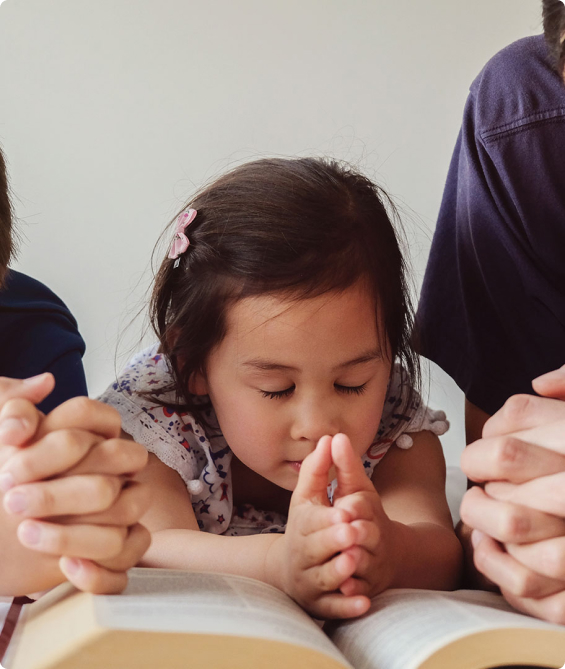Deepening Your Relationship With God At Home
Parents are the guides of their children’s lives. In each home, children grow and immerse themselves in specific values. Behind every gesture, behavior or action, there is a family that has set examples or expectations, either for better or for worse.
The modern family is subject to many pressures and cultural changes. Parents and guardians are responsible for much beyond the care and education of their children. Parents may sometimes feel disoriented, stressed by socioeconomic factors or may manage with few emotional and spiritual resources to address the complex situations in which they live. Families deserve accompaniment, support and training to aid in their children’s holistic development.

Called to be Different!
Most contemporary families experience a high level of distress, and many are in crisis. School, church, work, social media, organized youth sports, and friendships all have legitimate claims on the time and presence of families. Combined with the negative impact of consumerism, drugs, pornography, income inequality, systemic racism and other realities, many families find it difficult to develop habits and practices that lead to healthy spiritual and religious lives. Catholic families are not immune to these daily pressures and challenges, and many find it difficult to even schedule regular family meals. Catholic families are called to be different!
Dr. Gregory and Lisa Popcak are authors, radio and podcast personalities and Co-Executive Directors of The Peyton Family Institute for Domestic Church Life. Greg is also a Certified Psychotherapist and is the Founder of Pastoral Solutions Institute which strives to create more intimate and godly marriages that celebrate faithful and fulfilling family lives. They offer a Facebook group called Catholic HŌM–Family Discipleship to explore similar topics in marriage, parenting and family life.
Strengthening Family Life
Many parents need support, encouragement, and solid resources in order to unite and live a joyful and rich Catholic family life. The Peyton Institute for Domestic Church Life, a division of Holy Cross Family Ministries, examines the best ways to strengthen families as the basic cell of Church and society. This is one of our office’s favorite resources and their research helps to better understand and meet the spiritual needs of the 21st century family. The Peyton Institute collaborates with meany researchers and theologians to develop effective models of family prayer and spirituality for church leaders and families.
Browse their resource library for great videos on a variety of topics relating to faith and family.
The Peyton Institute for Domestic Church Life
Enkindle Catholic
Merciful Discipline
Is there such a thing as “Catholic discipline?” The short answer is Catholics parents should first and foremost look to Jesus as their model in terms of setting expectations, priorities and boundaries with their children.
For the writers and editors at Orange County Catholic, love, prayer and family unity are key. Read more at Discipline in the Catholic Family.
Four Tips for Effective Discipline from Catholic Counselors.
Contact Information
Staff
- Director: John Prust
- Associate Director: Janelle Peregoy
- Associate Director: Wendy Baez
- Administrative Assistant: Angie Rosario






